VTN Architects' New Cascading Family House Creates Large Green Gardens In A Narrow Site Of Vietnam
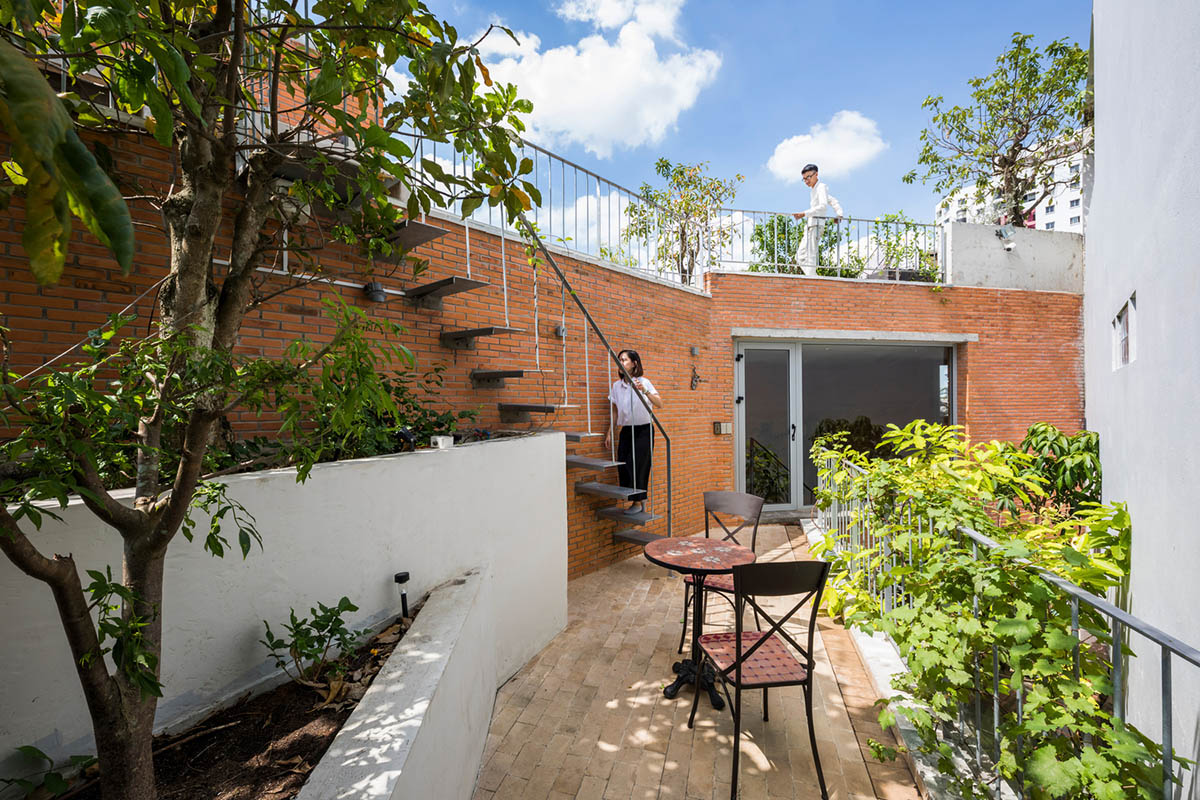
Vietnamese practice VTN Architects (Vo Trong Nghia Architects) has completed a new family house in a narrow site in Ho Chi Minh, Vietnam. The private house was designed for the three-generation family in a site located in an emerging residential area, 15-minutes drive from the center of Ho Chi Minh city, Vietnam.
This project is designed as one of the latest projects of the series project "House for trees" which the studio has been continuing during these past few years.
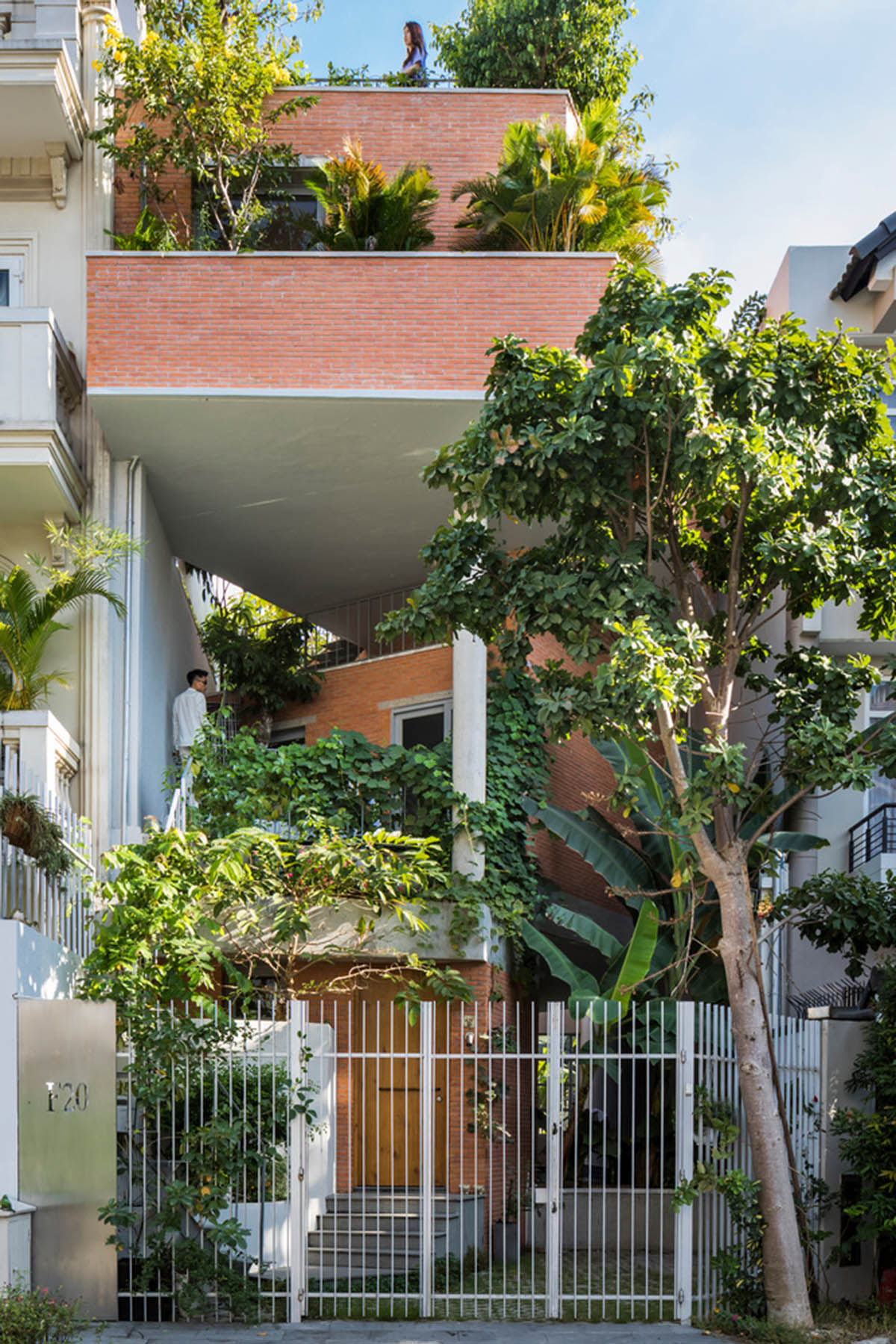
Called Ha House, the 137-square-metre house sits on a narrow site of 7 meter wide x 20 meter long. Taking the form of the site as an advantage, the architect aimed to seek variation in verticality bringing lush vegetation into each terrace and designing the building with cascading form.
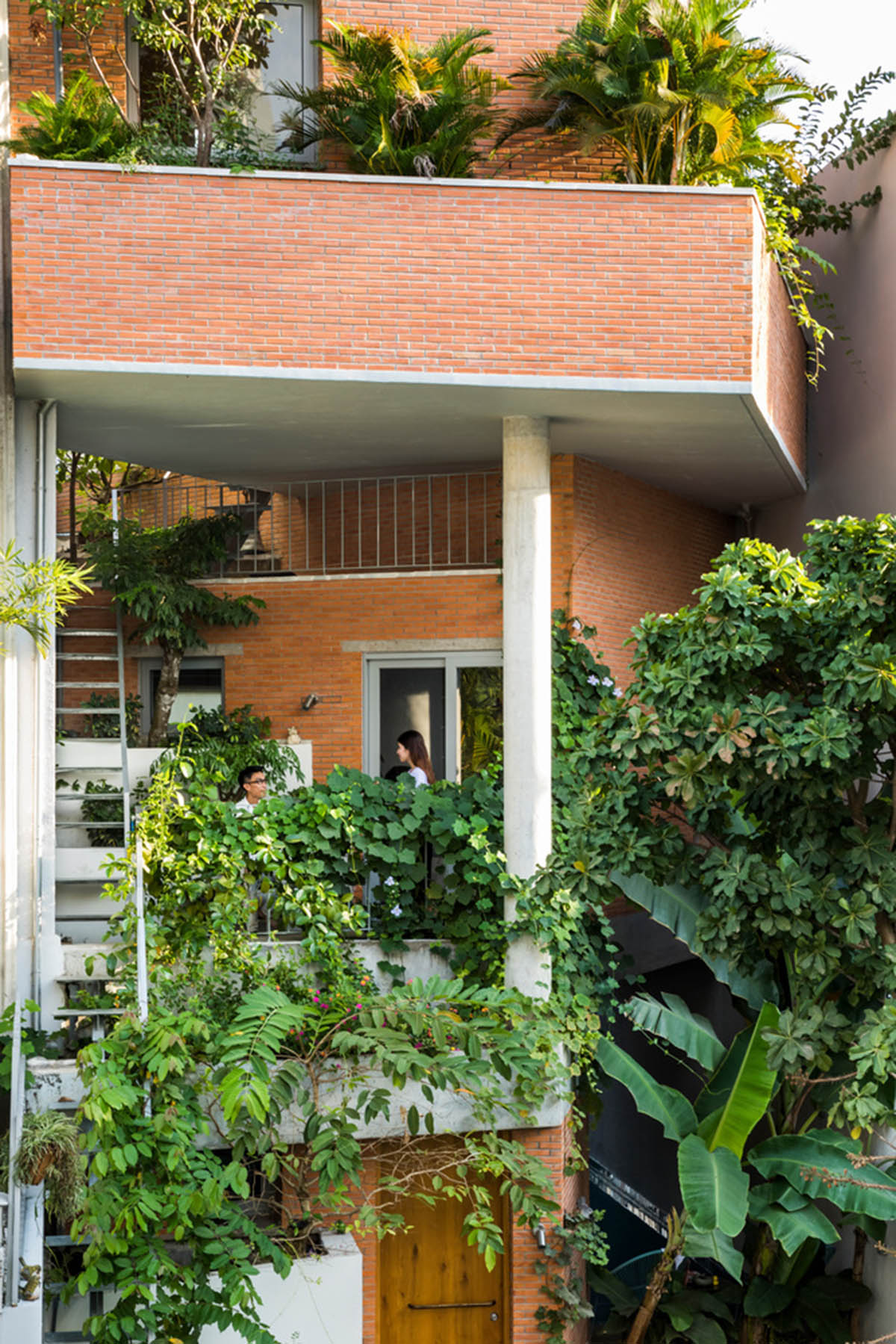
"The newly built houses around the site form a highly dense neighborhood and they share the outer wall with each other," said VTN Architects.
"Among such typical highly dense residential development areas in Asia, we decide to propose a strategy of housing that suitable for the tropical climate in which greenery and the residents live intertwined."
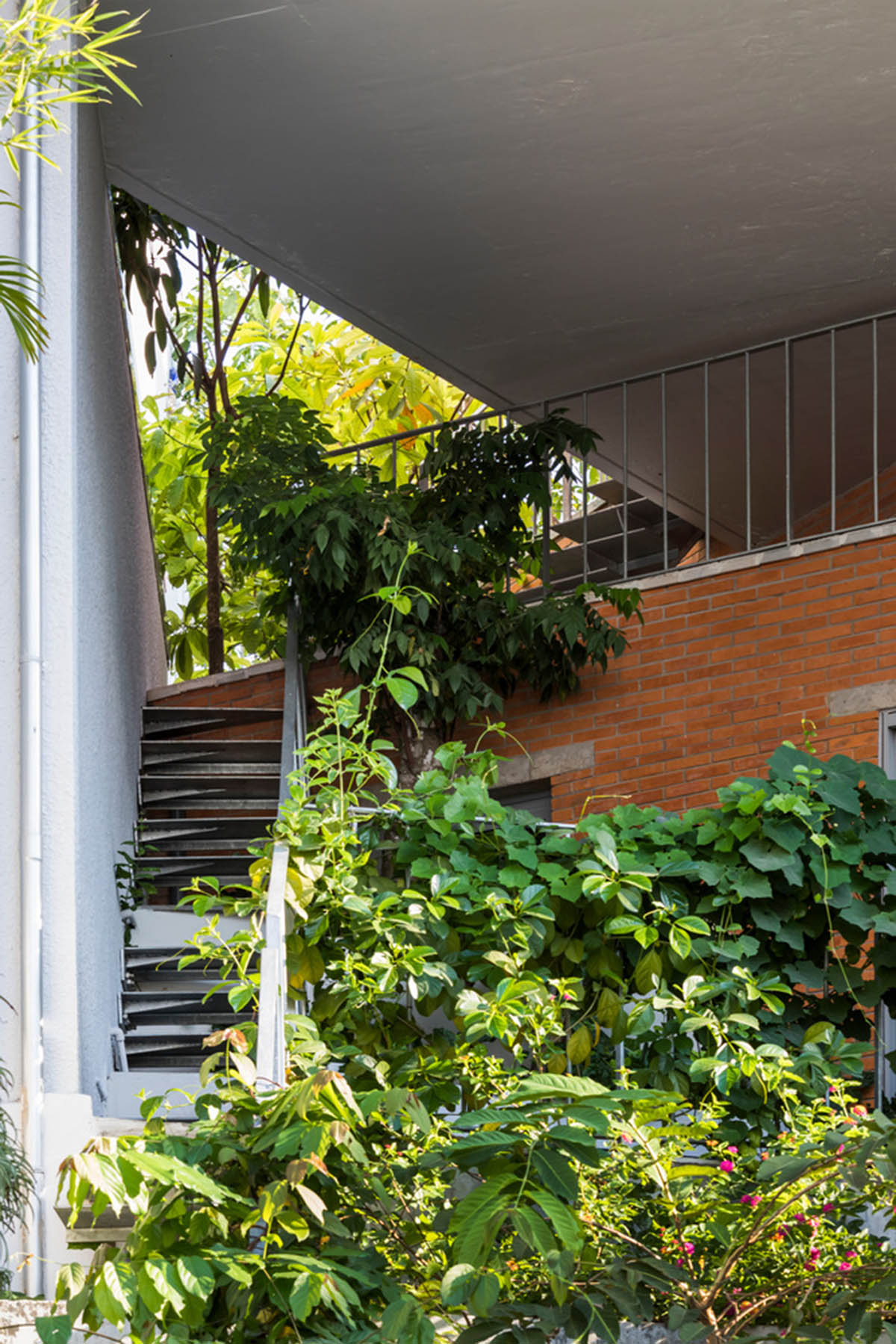
VTN Architects is known for its tropical houses filled with green plants and trees harmonized in one structure. Considering the climatic conditions of Vietnam, in the Ha House, the architects created "large green gardens" meeting the client's demand. These large gardens also provide a space where children can play and adults can have BBQ with their family and friends.
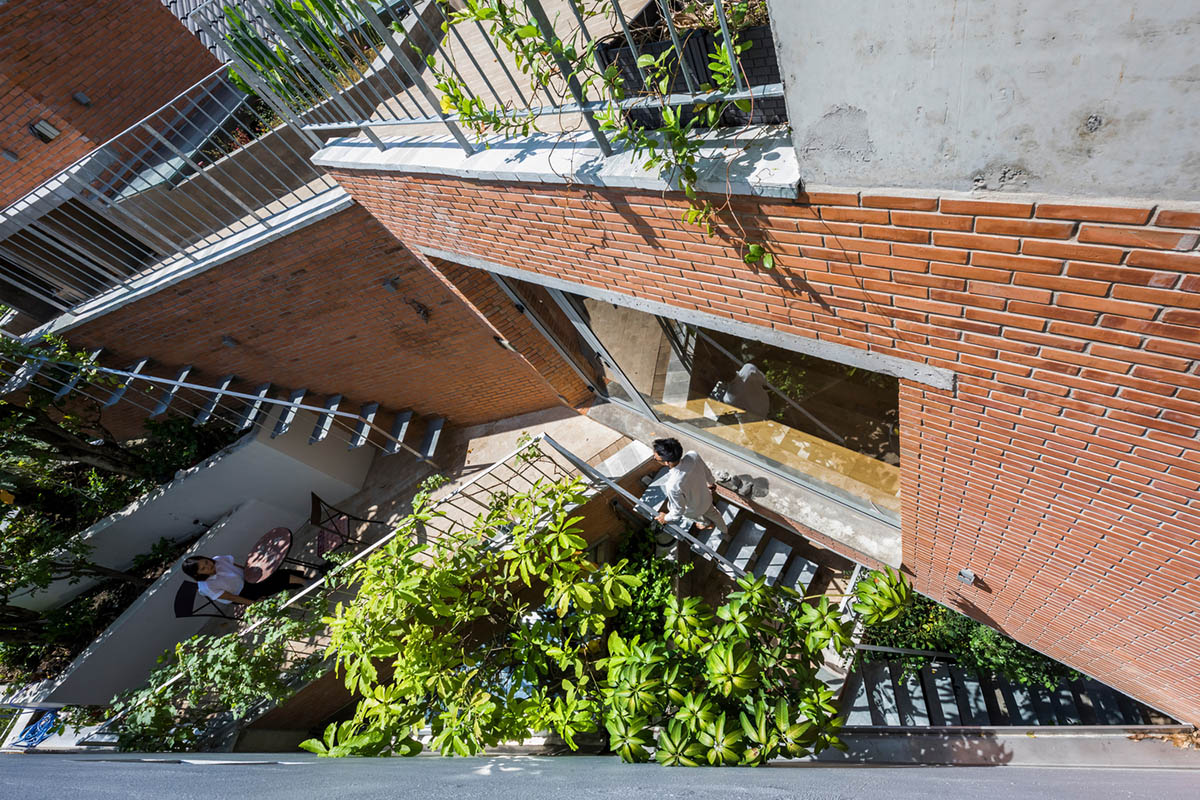
"In addition, the residents also expect a big swimming pool, spaces for exercise, a grandmother’s bedroom, a living room & a dining with kitchen, a sufficient parking lot - all on the ground floor. Hence, we have proposed to divide the idea of the “large green garden” into smaller connected gardens," added the architects.
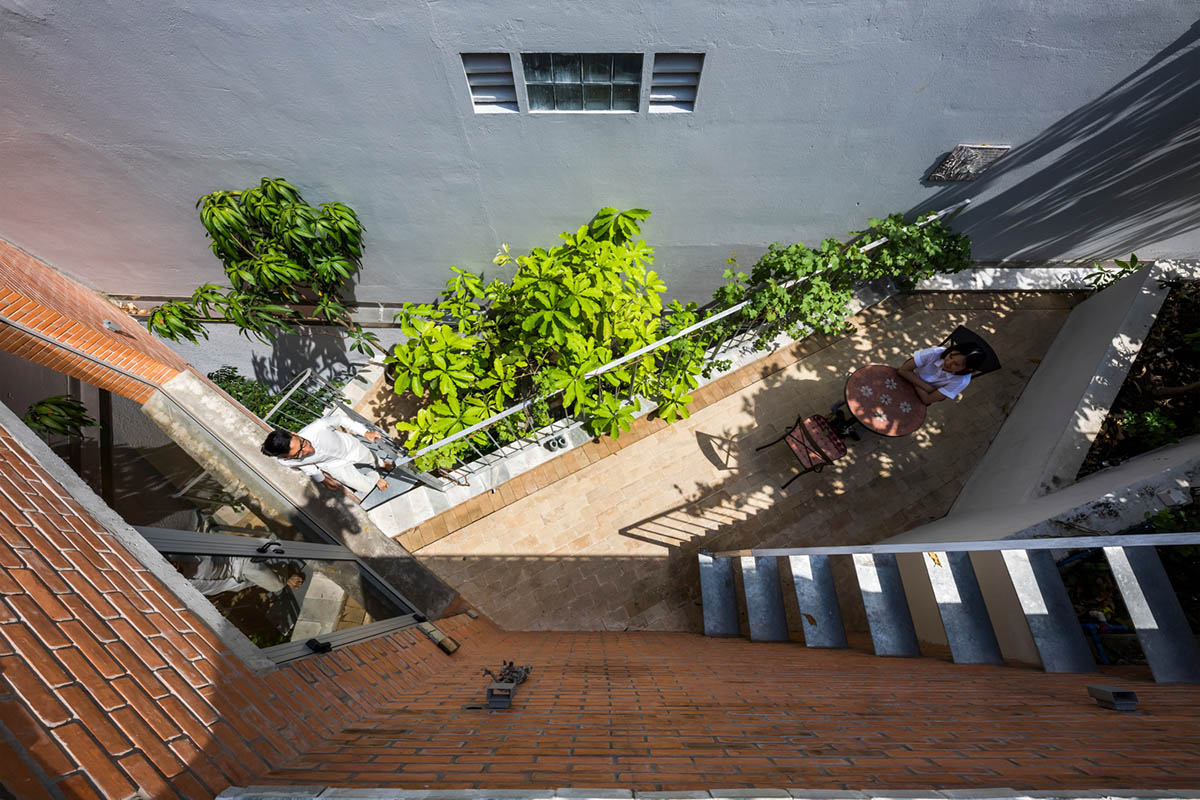
By describing these green spaces as "one continuous garden", the volume of the building is climbed from the ground floor and it is gradually set back while twisting. On the top floor, the house is configured to protrude a two meter cantilever to the main road.
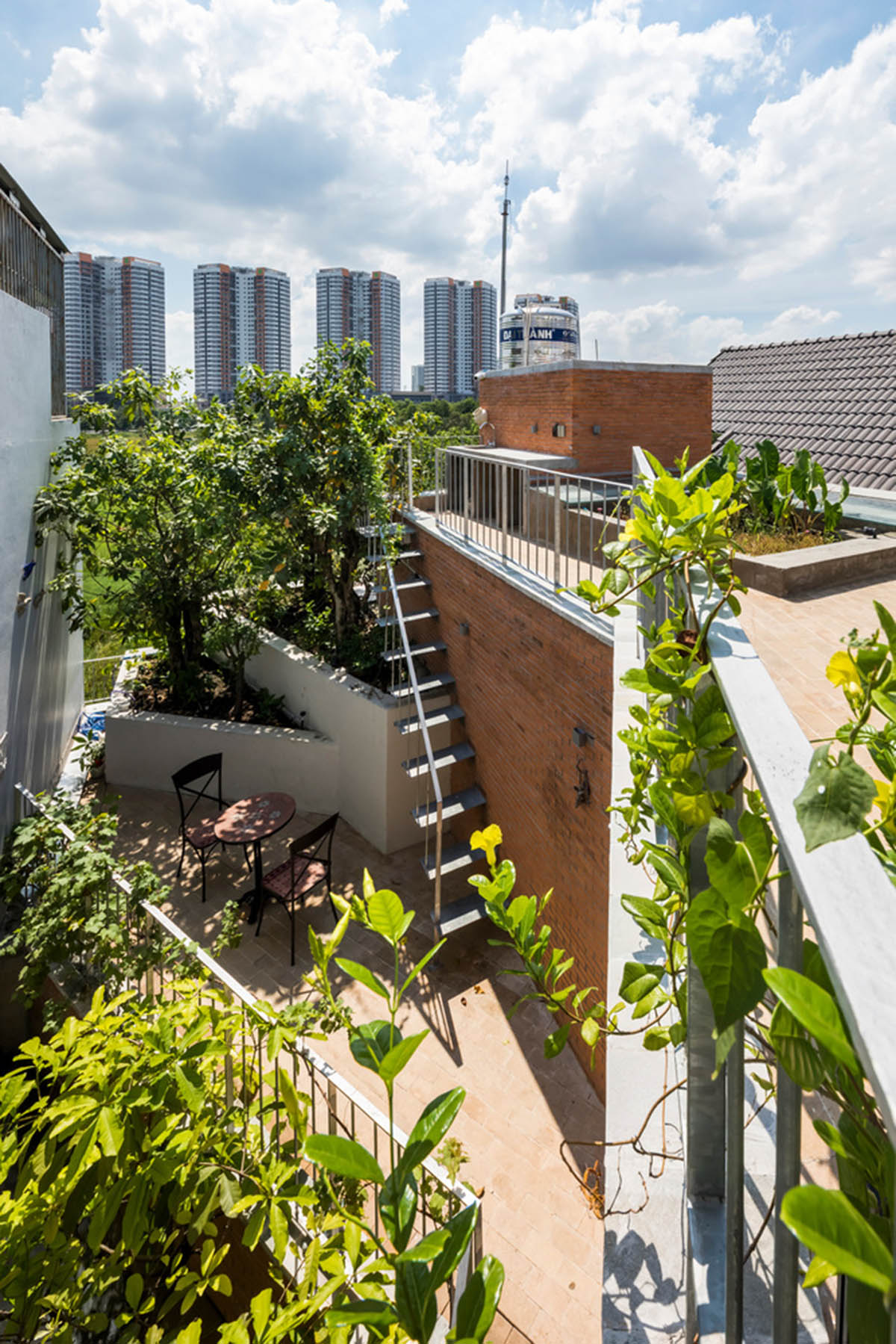
The stepped gardens of the house are placed interwinely with the terrace as they are connected and continuous to the top floor. Depending on the type of trees, they create an umbrage that filters the harsh sunlight and cool down the air for the house. In addition, each tree pots also functions as a blindfold from the main road.
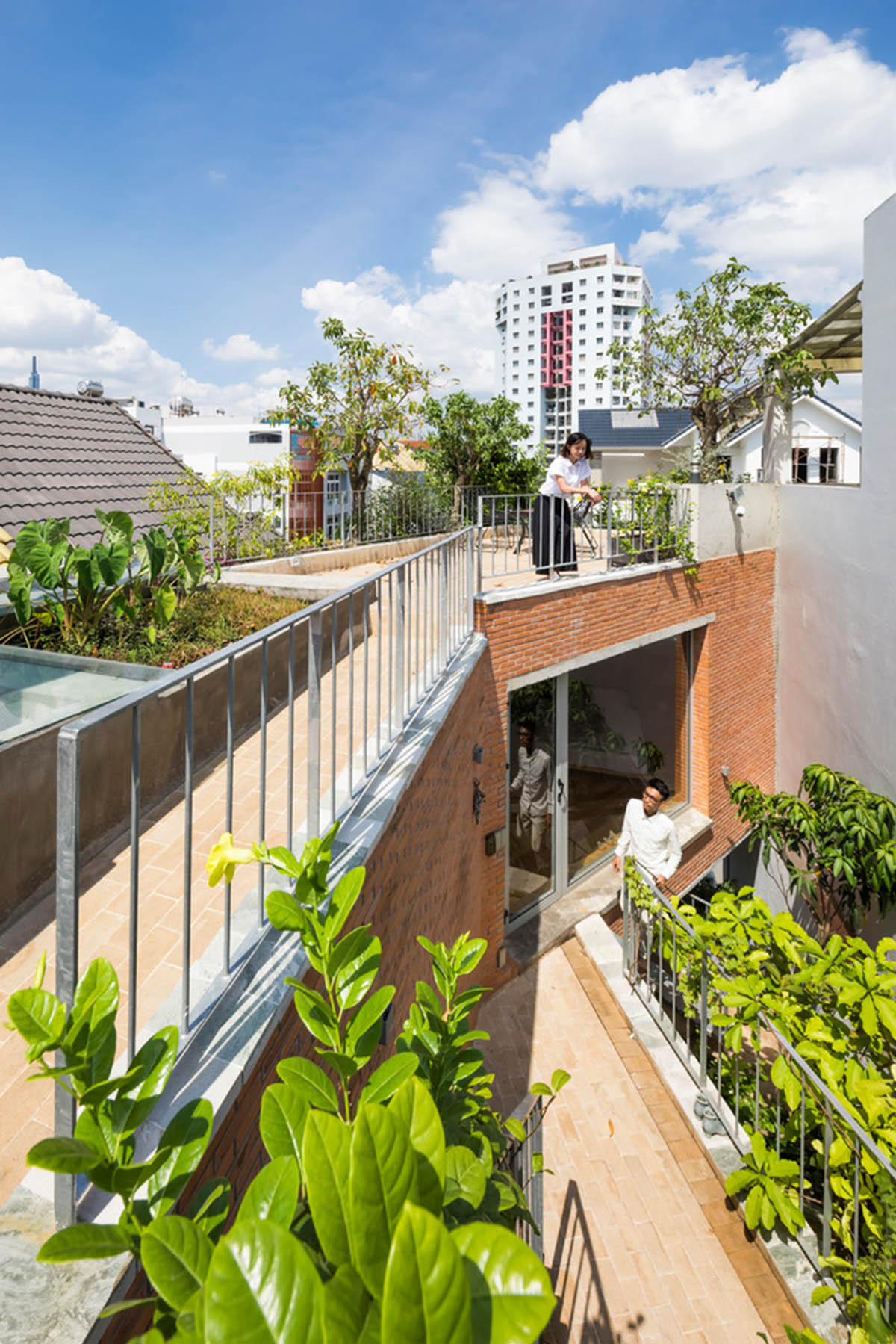
On the other hand, the terraces are arranged on each floors with variety of size according to function. At some place, it is designed as a private garden that the residents can access directly from their bedroom.
While in other space, the terrace becomes the public garden which everyone can gather. All of these gardens are individual spaces that are also "one continuous garden" where the residents and kids can go through by the steel staircase outside.
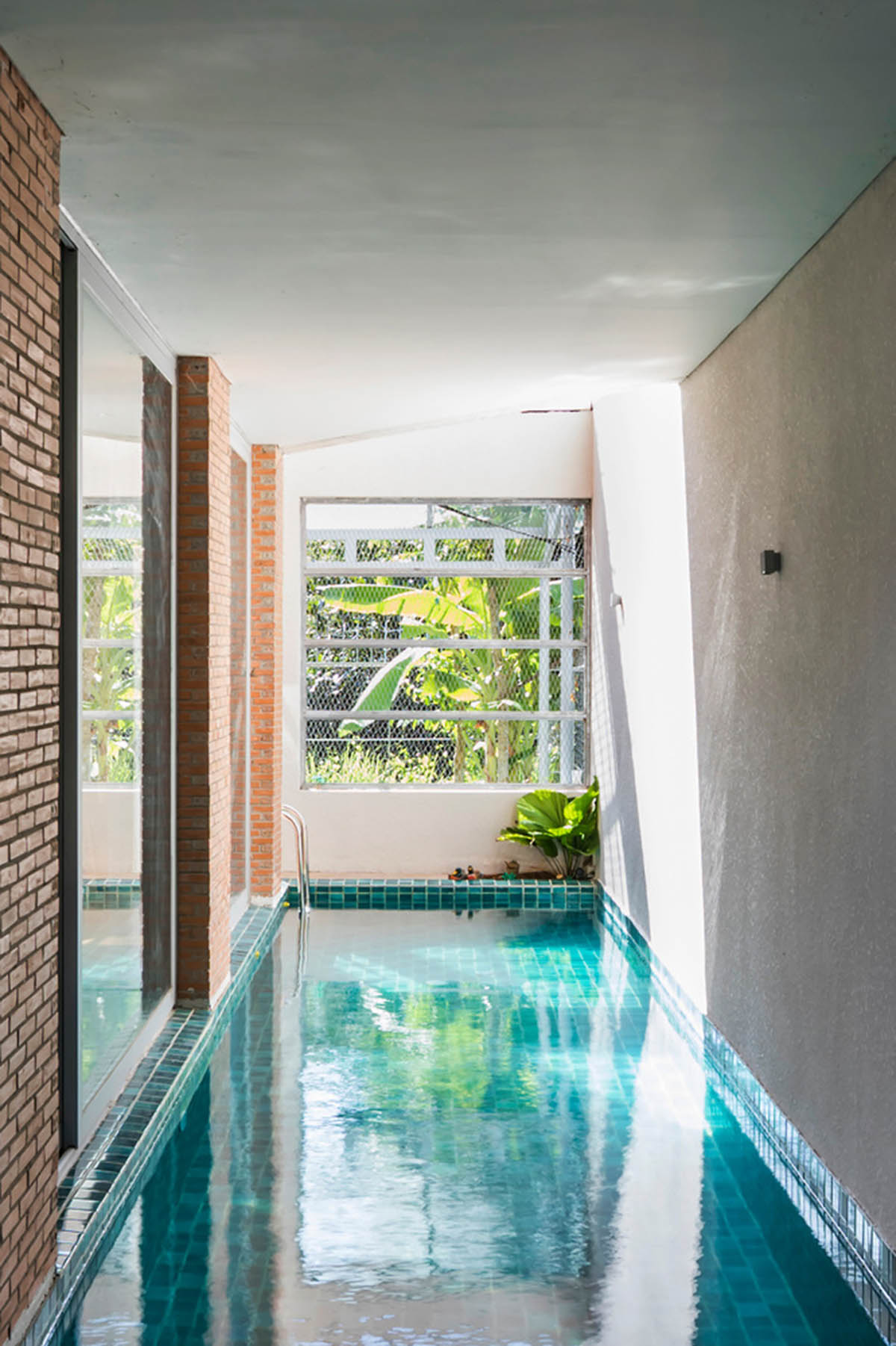
In the interior space, the ground floor and the first floor are connected by a huge central void. It attaches all of the main funtional spaces such as the living room, the dining with kitchen, the library and the kids’ bedroom to become one space in which the residents can interact with each other. At the same time, through the big openings with different scales and proportions inside the house, the residents can also connect with the greenery outside the house.
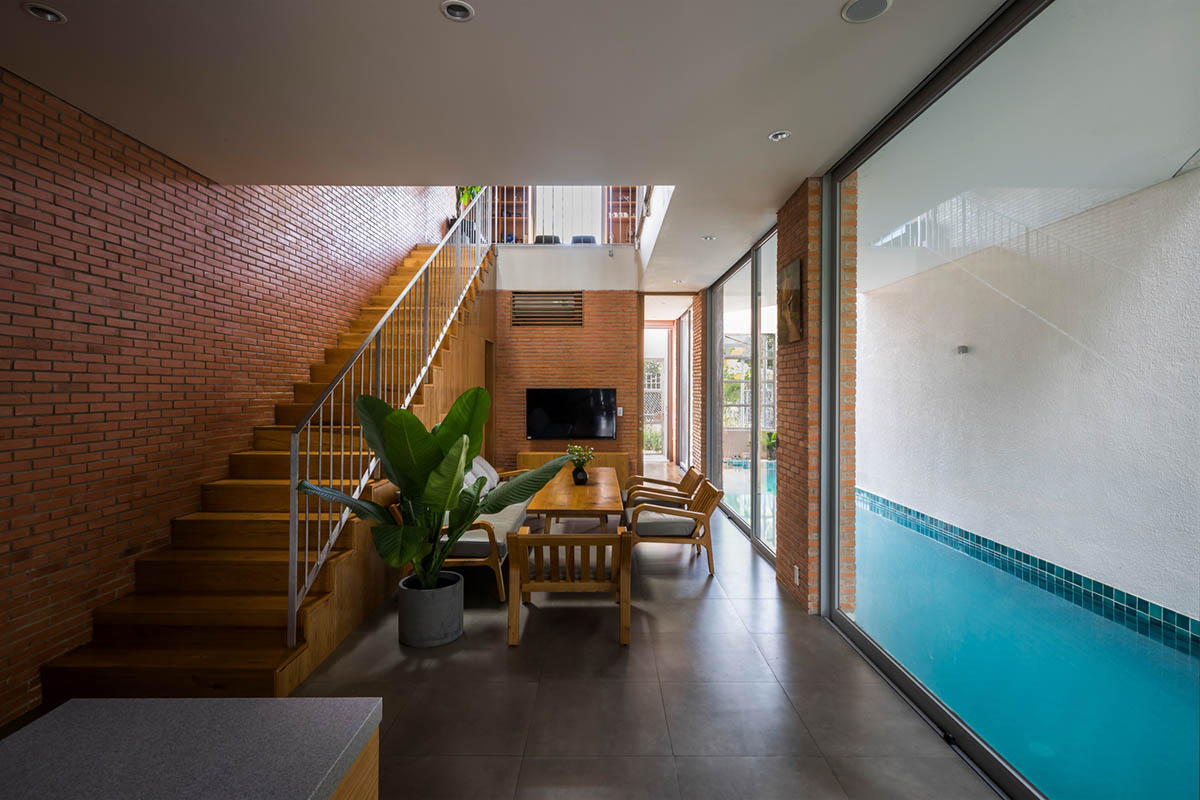
"Thus, we hope that the house will be a bridge that connect people and people as well as people and nature," added the architects.
For the house's environmental strategy, the architects designed some gaps that are created by the shifted volumes allowing the natural sunlight and cool wind to pass through. "In such an elongated site where it is often narrow, hence we have created such open spaces for the house," explained the architects.
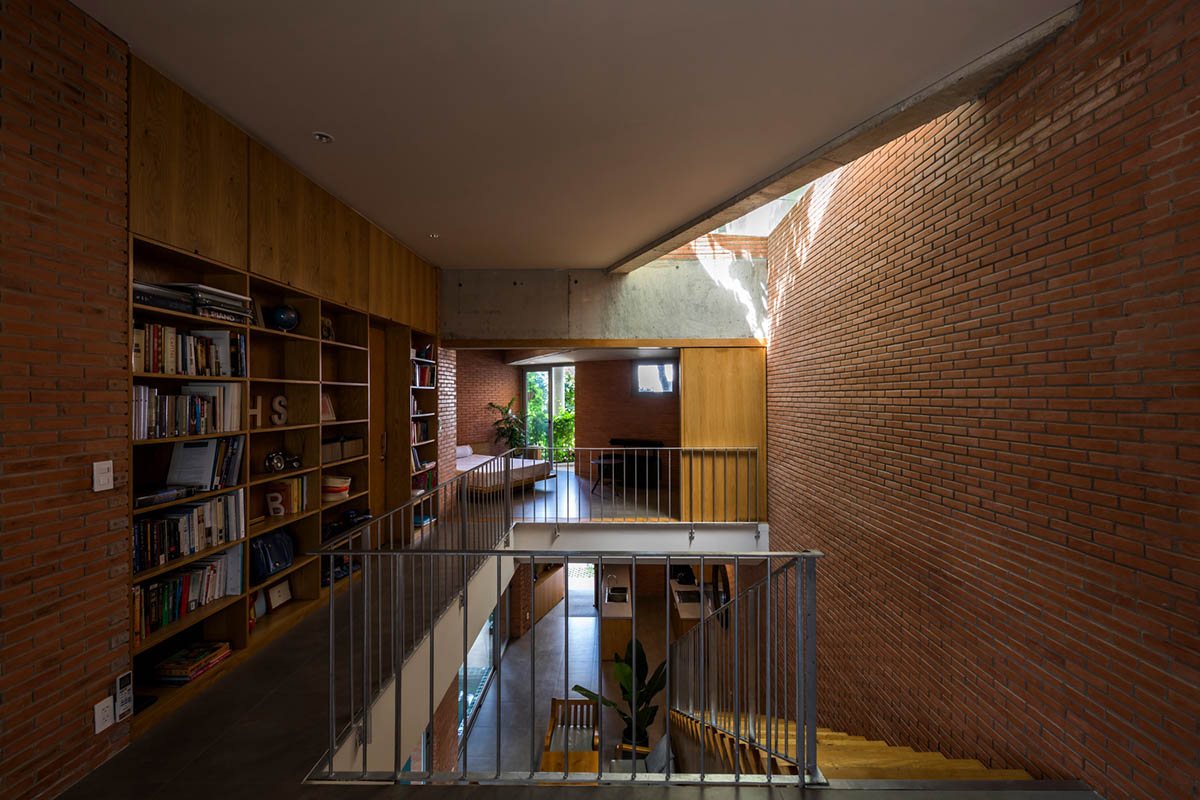
As the direct sunlight is reduced by the greenery on the facade of the house, the residents’ future electricity usage of air condition will also be decreased.
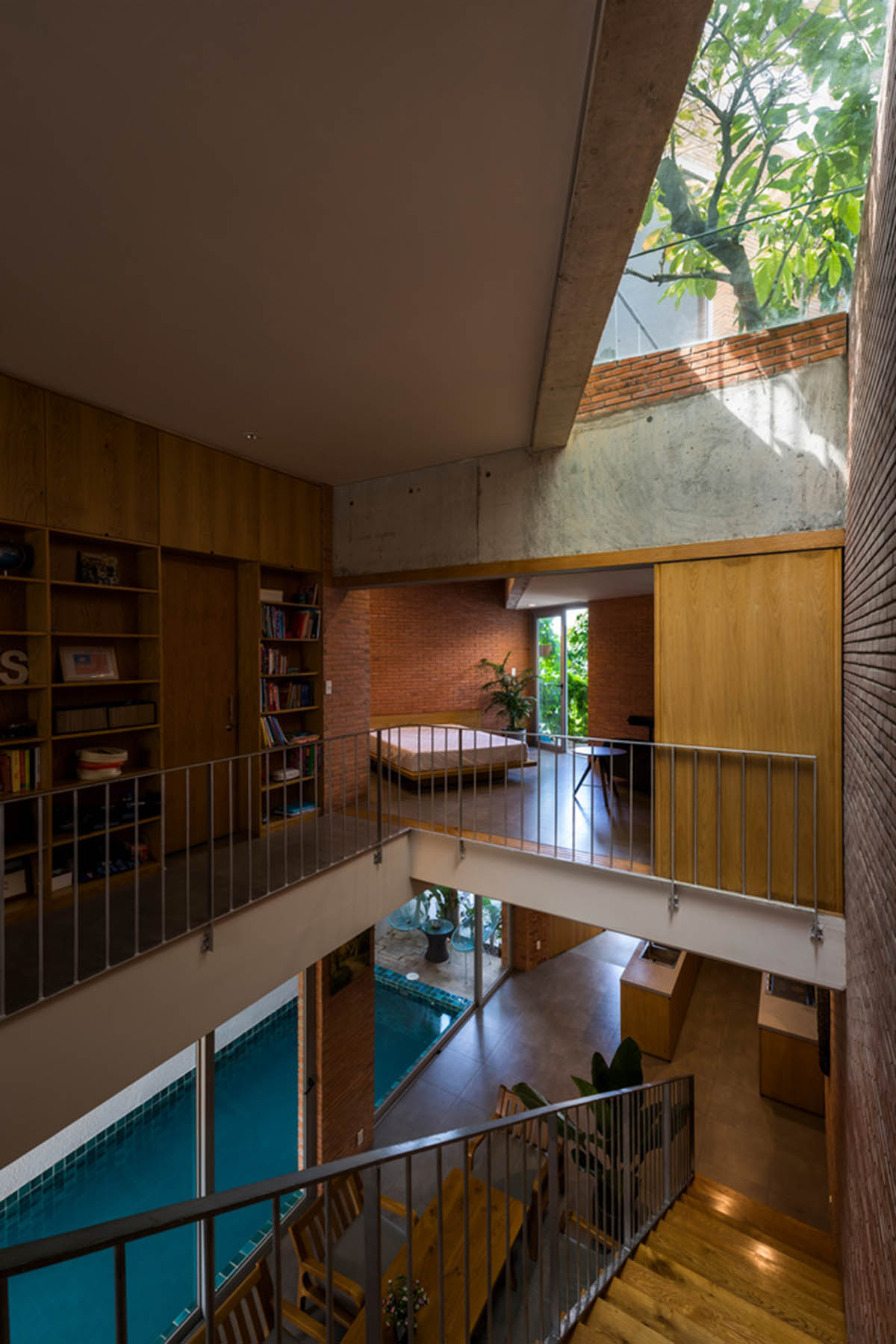
"Because of non-abundant budget, we are required to reduce the finishing cost for the house as low as possible. Therefore, we apply bricks as finishes, a method commonly used in the construction sites in Vietnam while at the same time reducing the construction expenses in general," they added.
"In addition, as the labor cost was small, we were able to control the quality of arranging the brick on construction site. Since brick is also a local material, the carbon footprint from transportation was greatly decreased."

Among "Houses for Trees" series, VTN Architects aimed for not only to plant trees in houses, but also to create a new type of house for trees which the life of residents and nature are more closely intertwined.
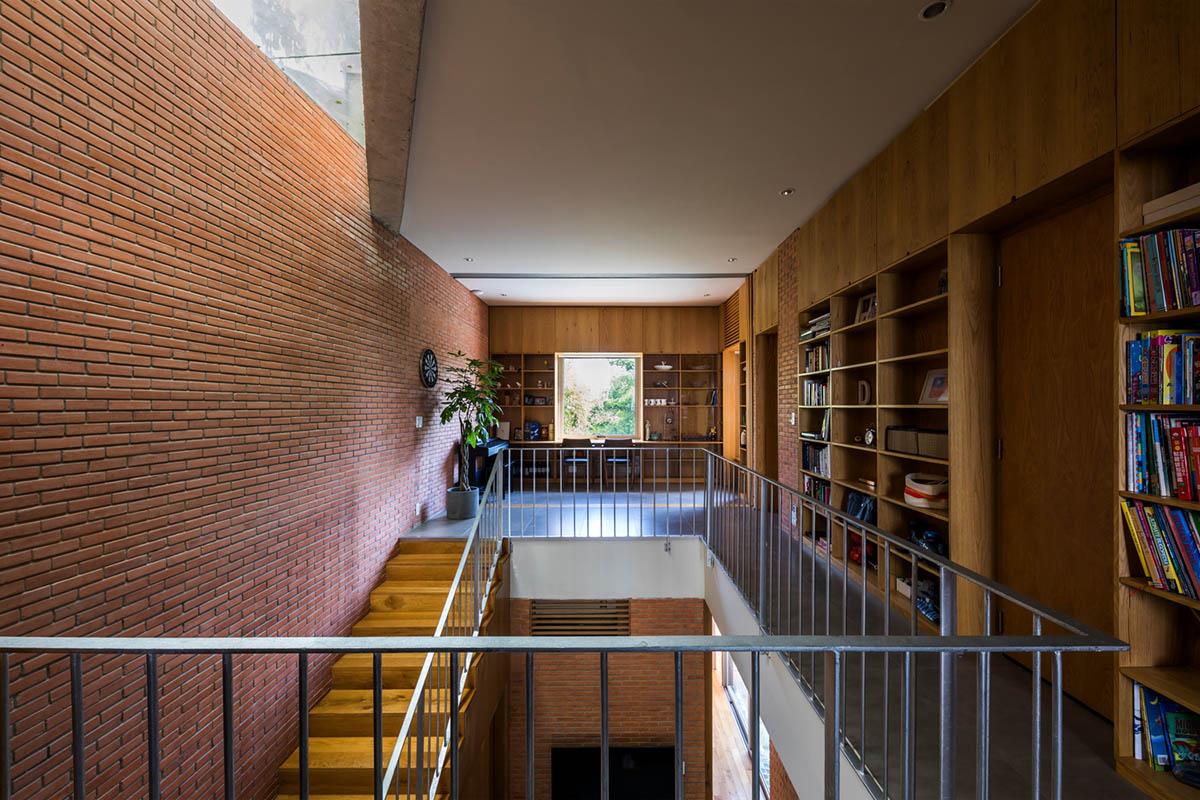
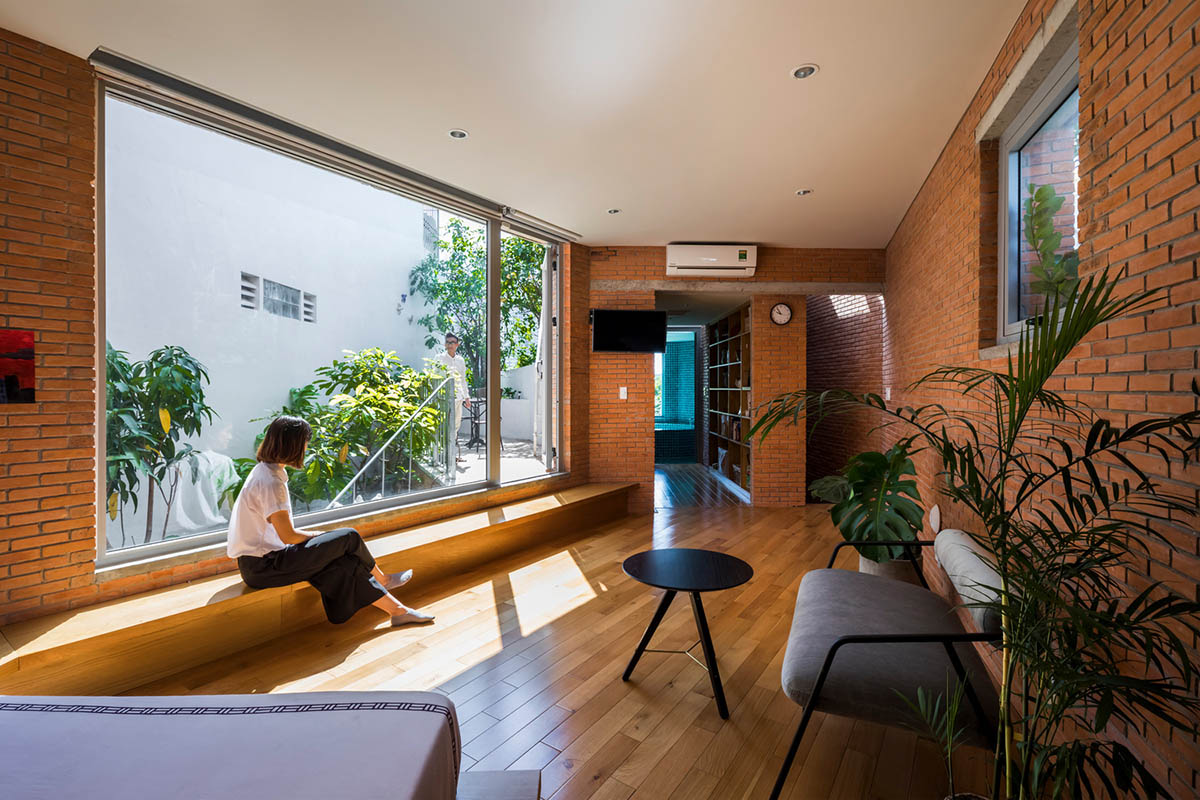
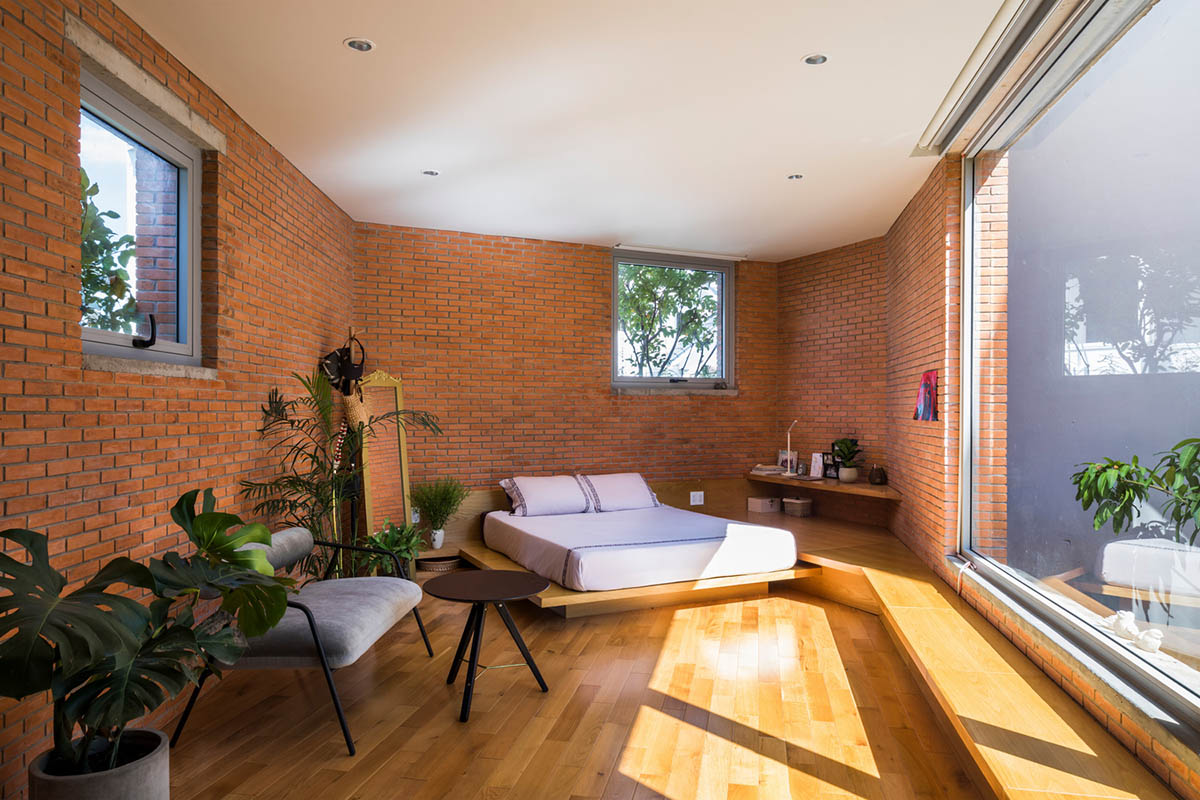
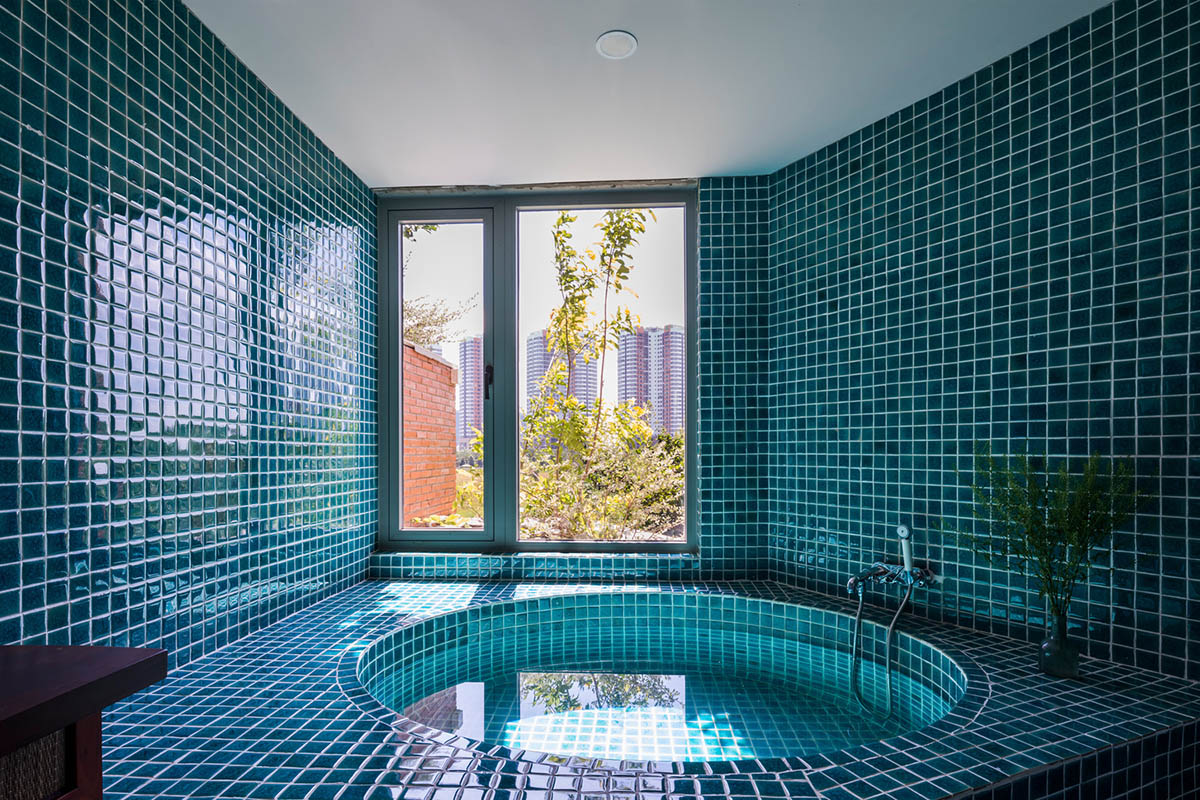
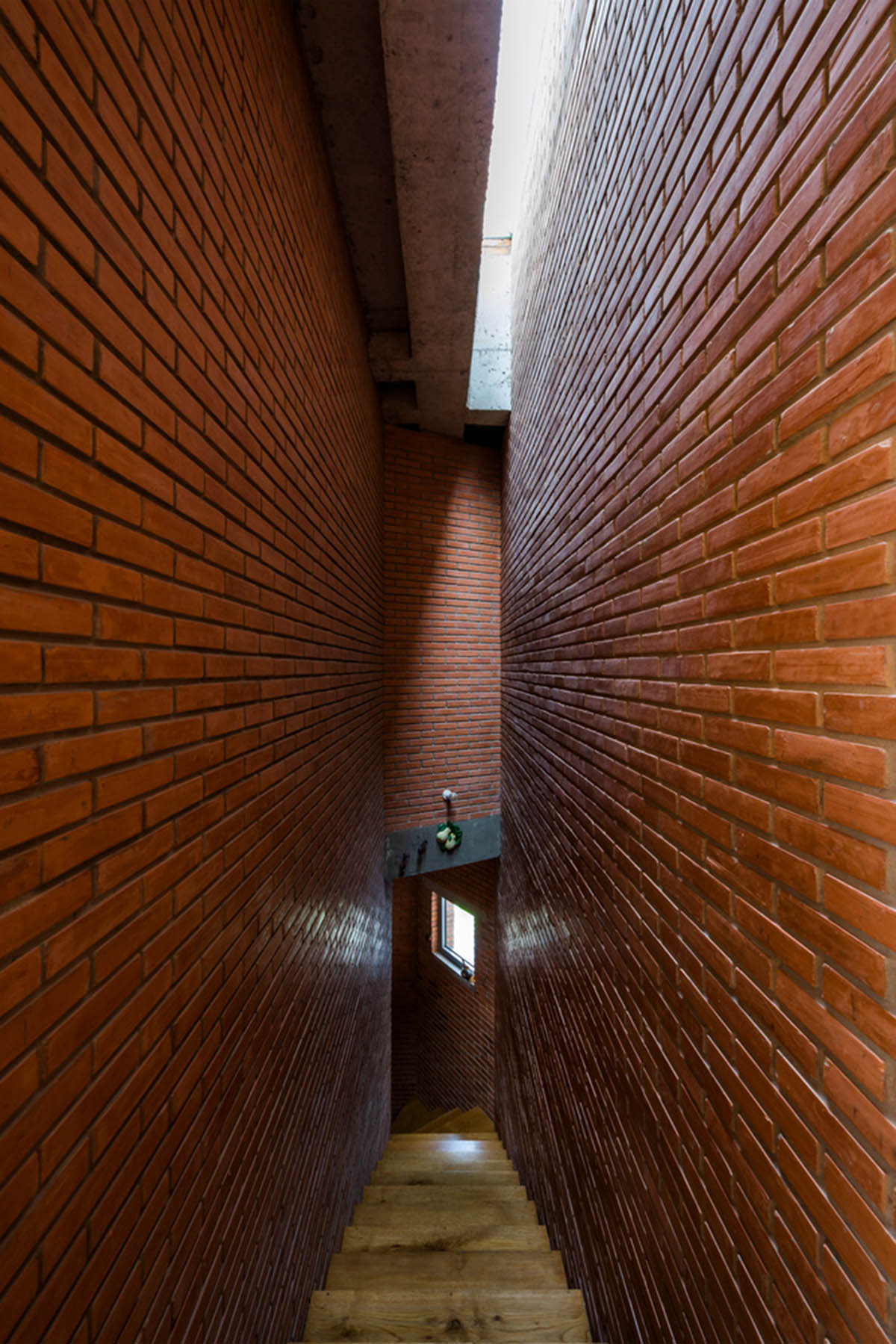
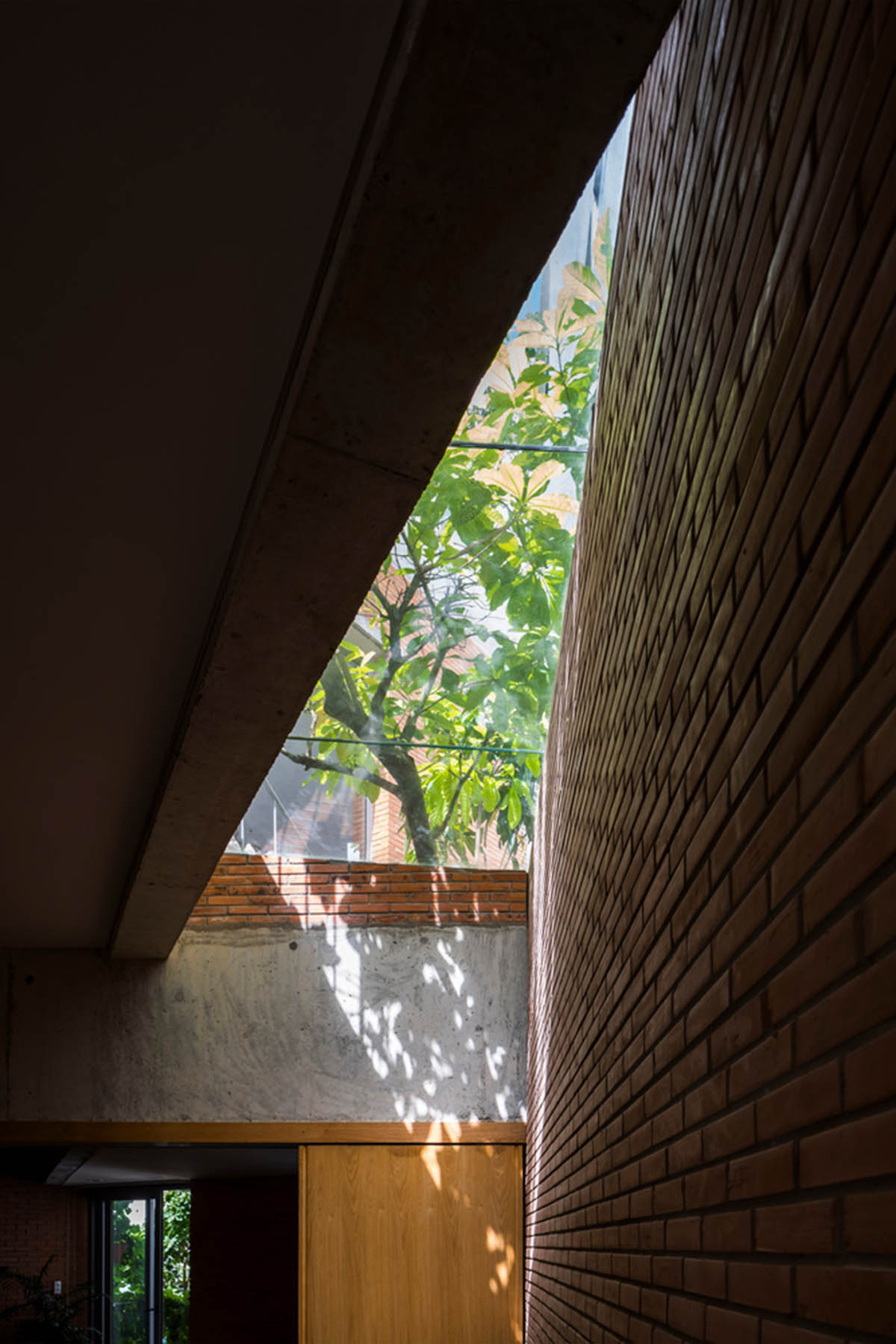
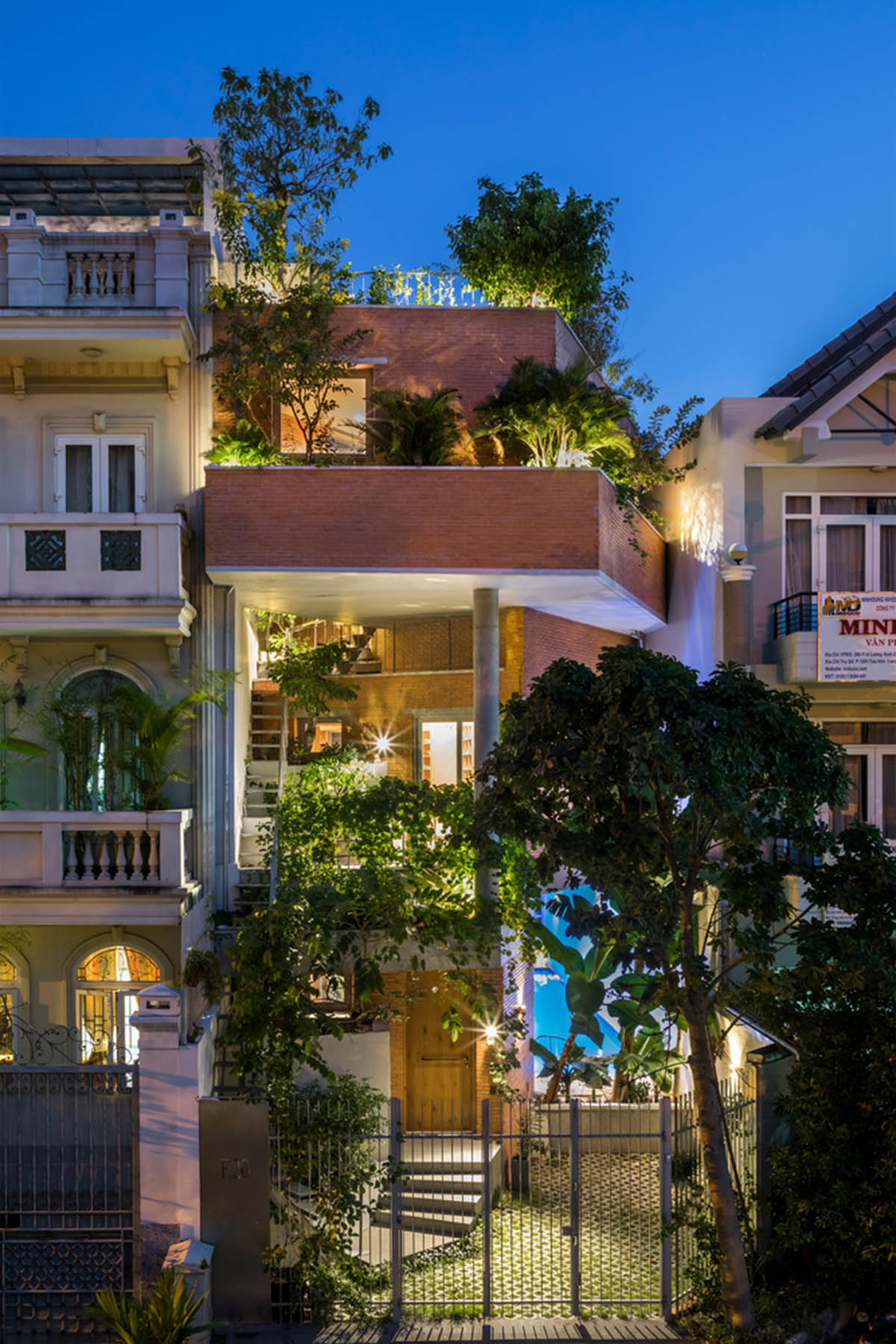
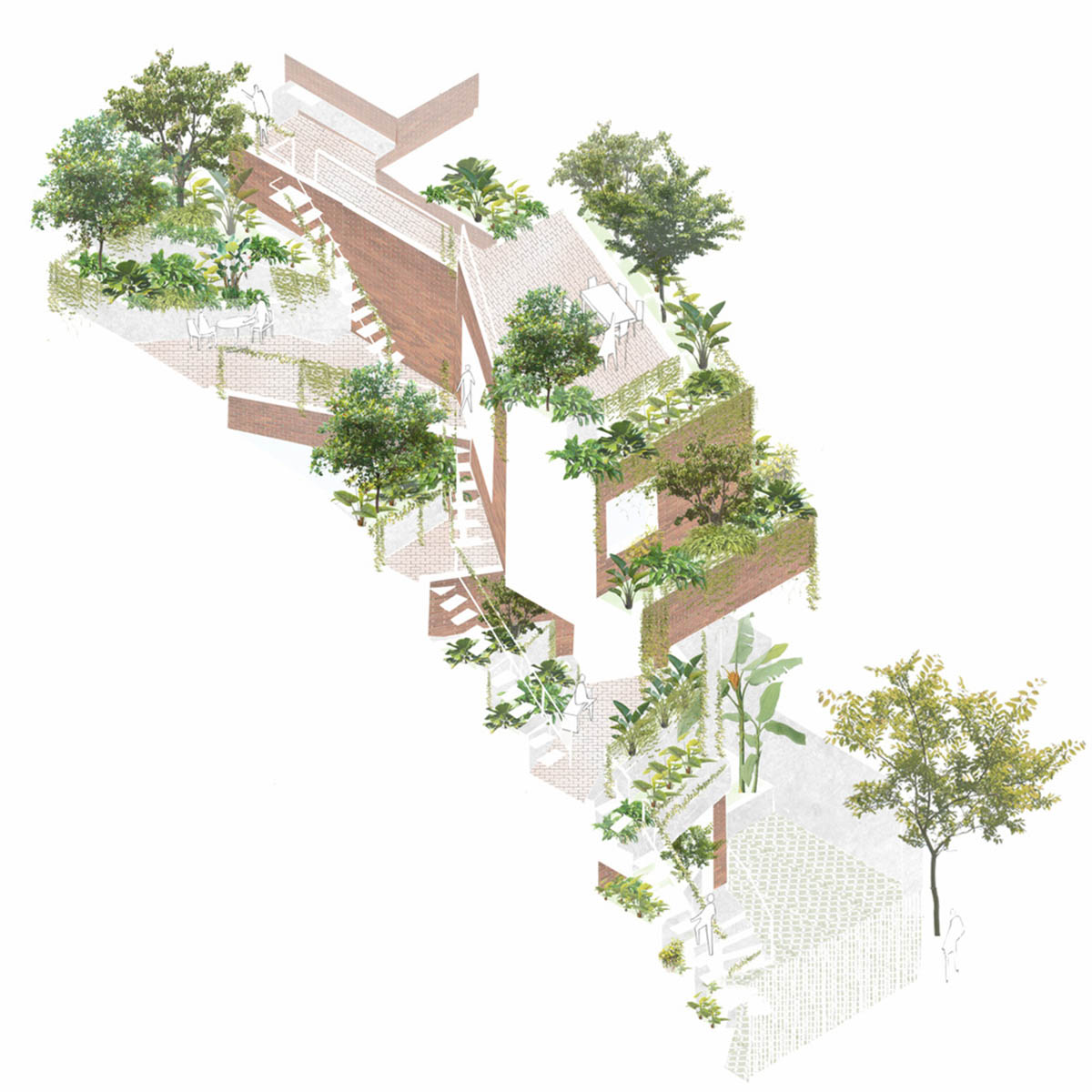
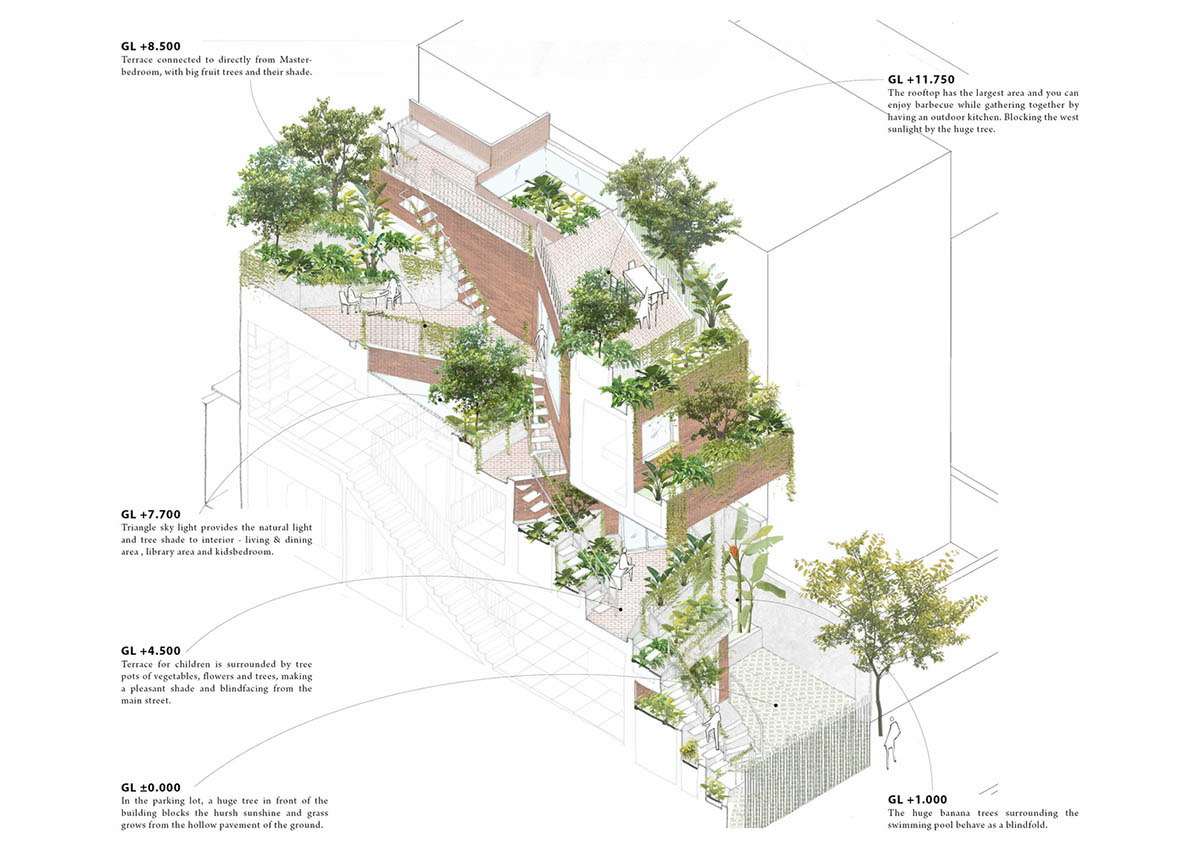
3D diagram
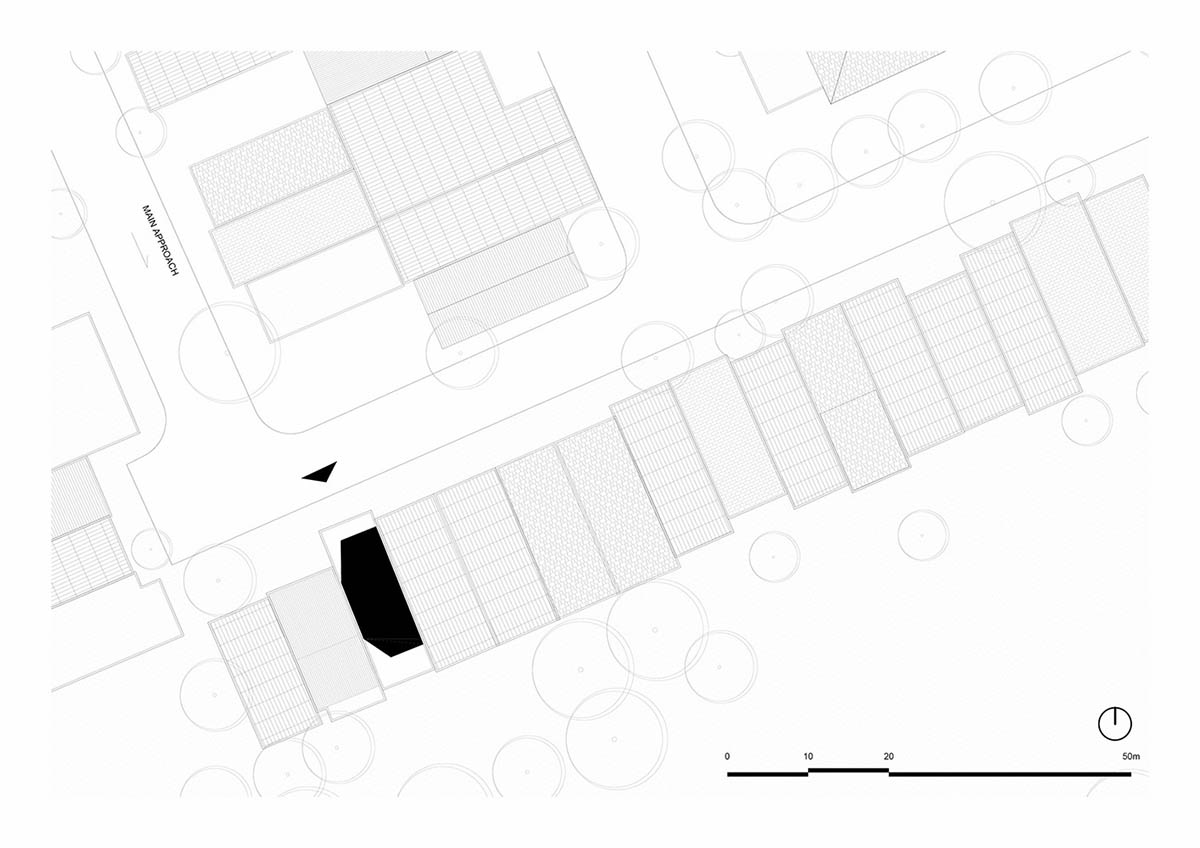
Site plan
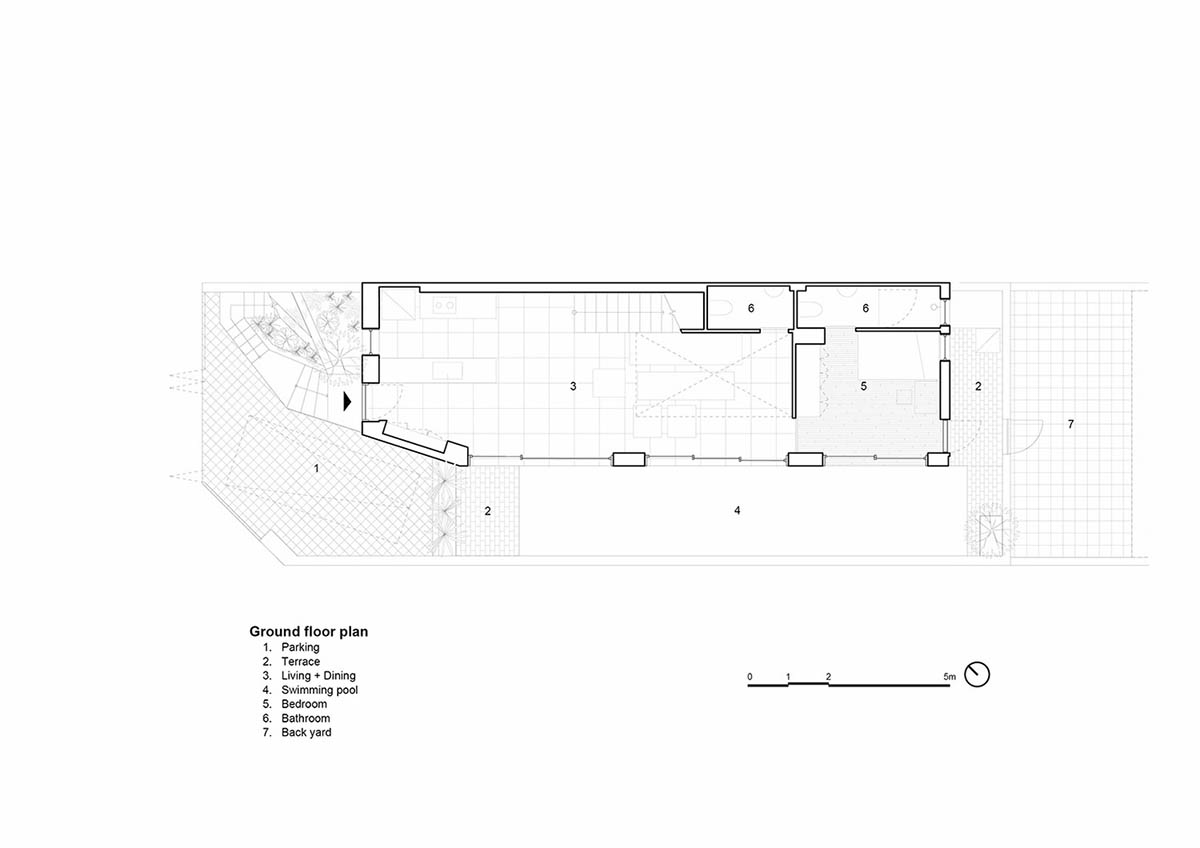
Ground floor plan
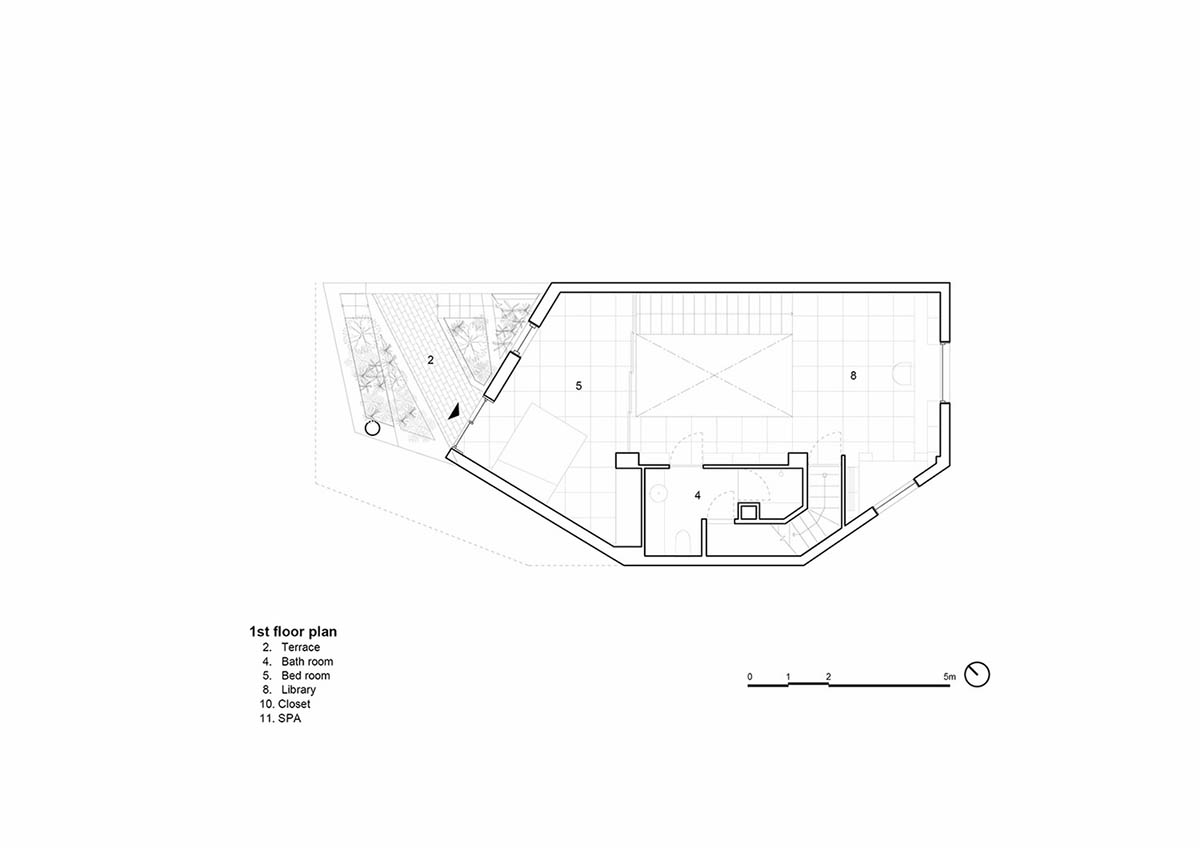
1st floor plan
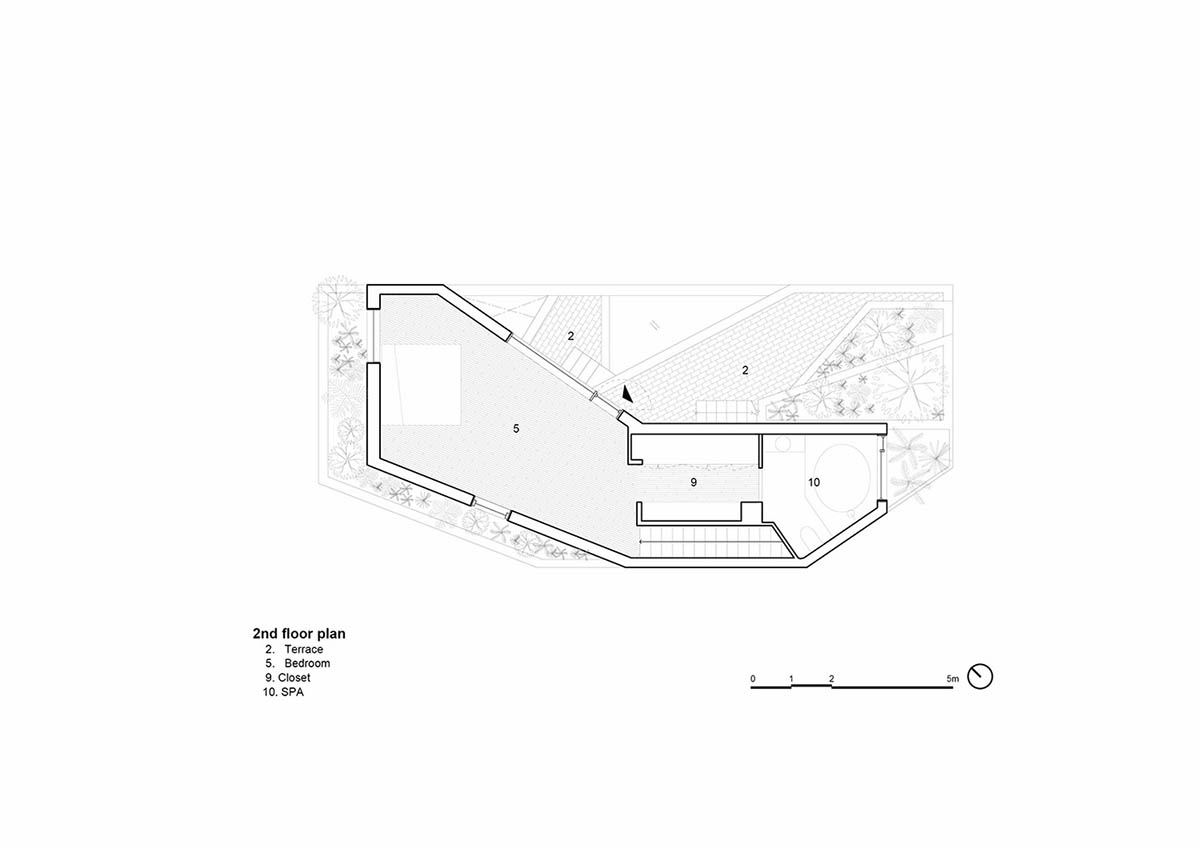
2nd floor plan
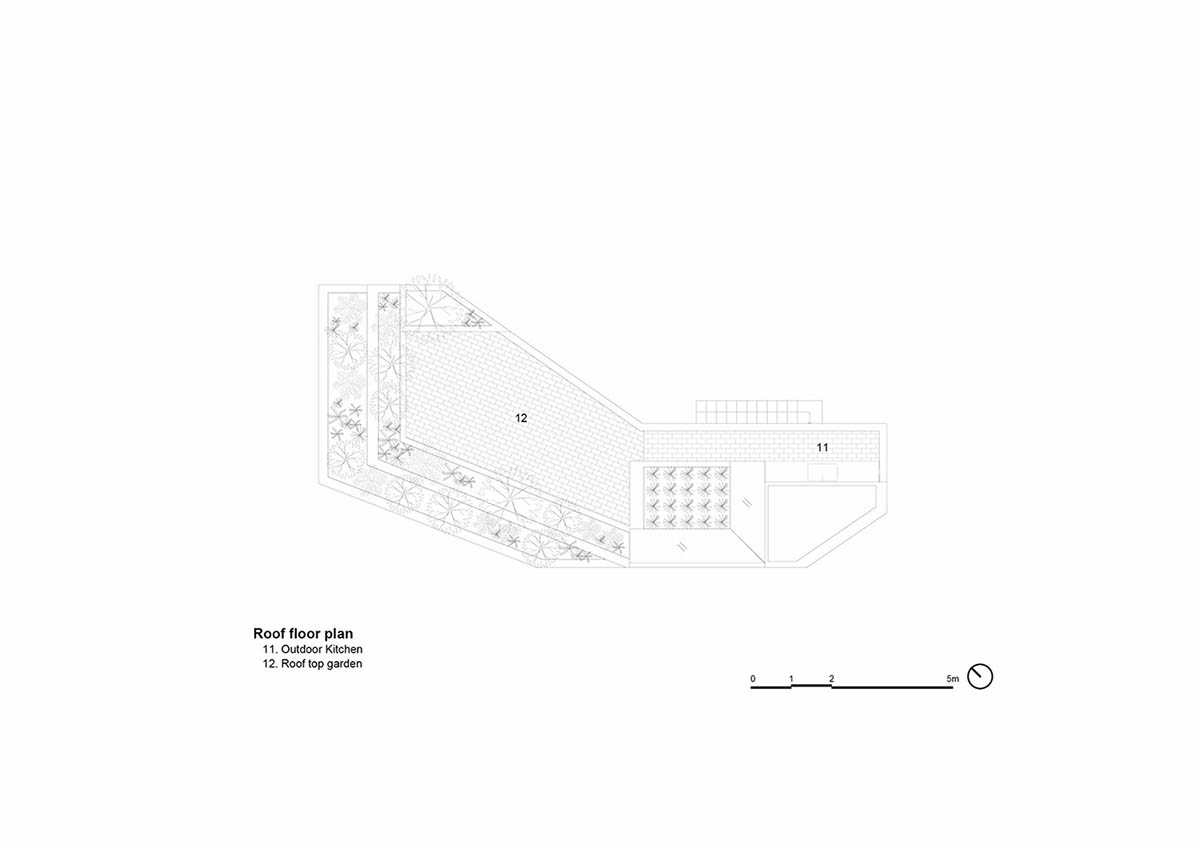
Roof floor plan

Section
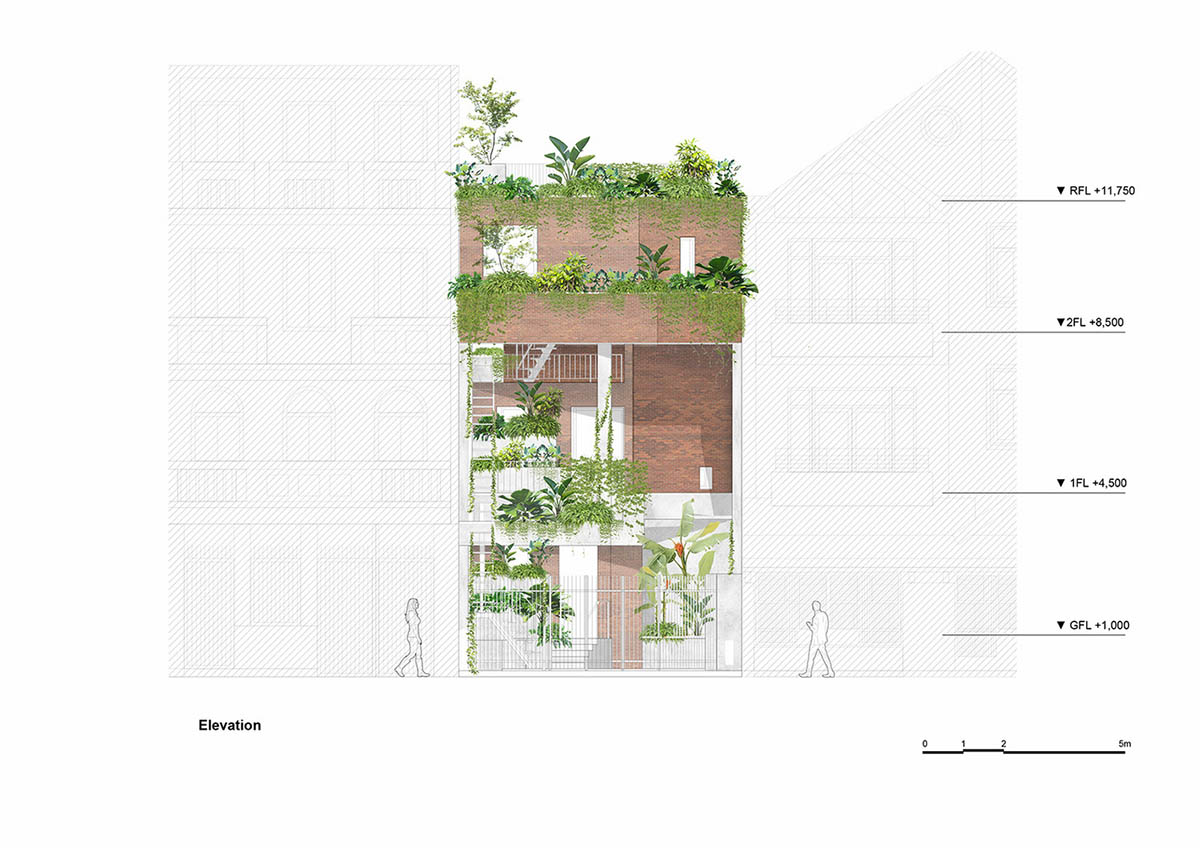
Elevation
All images © Hiroyuki Oki
> via VTN Architects
